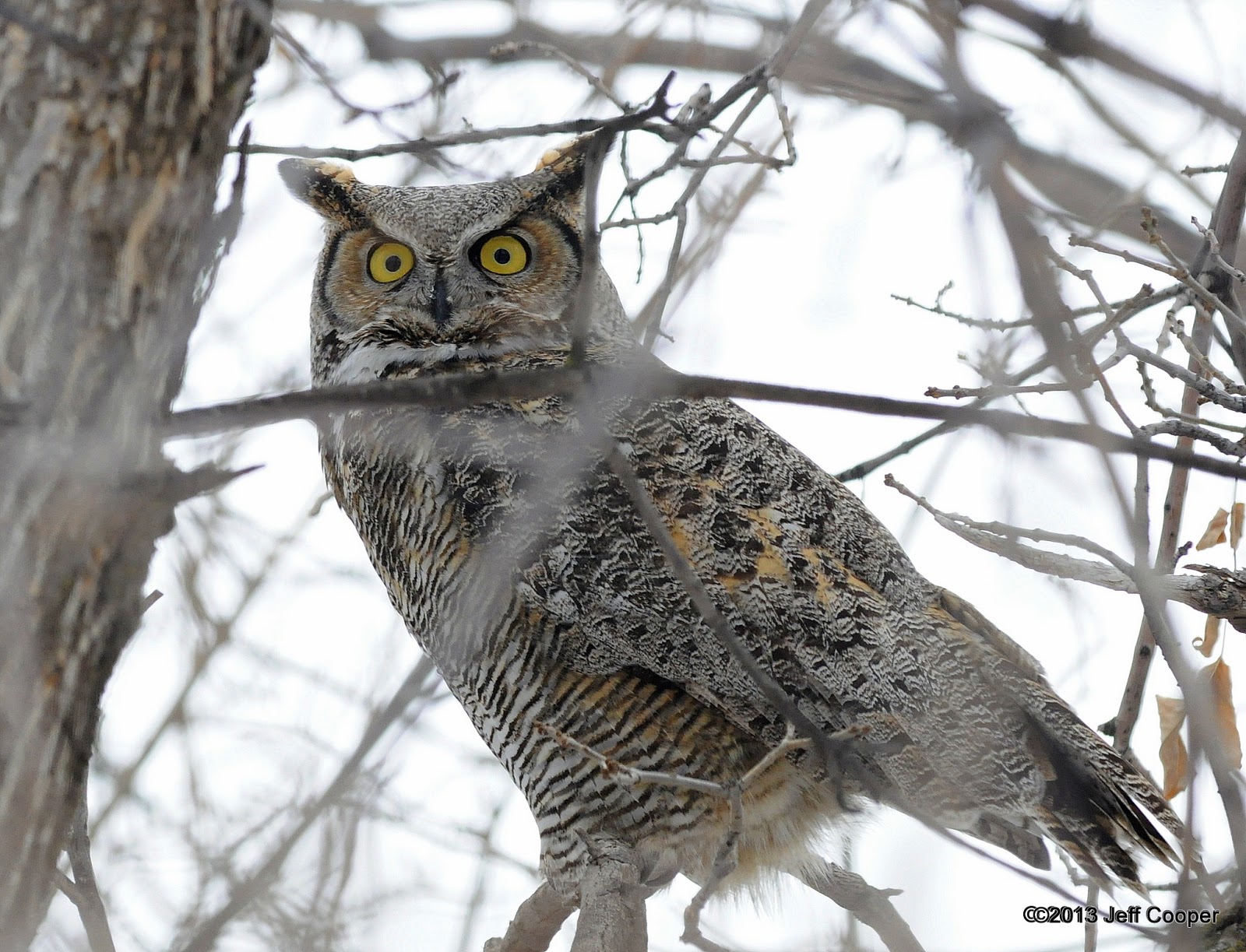We were in a very rural area near Goshen when my cell phone dropped a call from my wife. She had just mentioned something about how the driveway at home was now a sheet of ice and she lost control of the car and slid down the driveway. Of course I wanted to know how that story ended so I began to slow down so I could try to reconnect the call. It turned out that she and the car were fine, but about that same time Eric noticed a large shape amid a stand of trees next to the road and asked me to back up. We did and soon discovered a Great Horned Owl. We pulled over to the other side of the trees to see if we could get some photos. We had a better view of the owl so I exited my Tacoma and quickly discovered a second owl just about ten feet away from the first one. I'm pretty sure they were a courting pair. Great Horned Owls begin breeding and nesting in January and February, much earlier than other raptors. We saw one bow and hoot at the other--typical of breeding behavior. It was a scene that reminded me that despite a difficult winter, nature moves forward and the cycle of life continues.
We had heavy fog when we spotted and photographed the owls so the lighting was horrible--notice the lack of blue skies in the images below. I played around a bit with exposure compensation (increasing it) as I captured the images below. It allowed me to get brighter images of what would have otherwise been color-muted owls, but it also brightened (overexposed) the foggy background. I'm still capturing all my images in jpg format (not capturing raw images) and do minimal editing using Google's free photo manager, Picasa, so the better I do in the field the better my chances for ending up with decent images.
You can see that one of the owls below (1st and 3rd images) has more of the orange/tawny coloring in the facial disc around the eyes. I'm not sure if that helps to identify the sex of these owls because Great Horned Owls vary greatly in their coloring, from almost gray to more of a darker color overall. Feel free to weigh in owl experts. Usually females are 10-20% larger than males, but that didn't seem to be apparent as we viewed these owls.
We had heavy fog when we spotted and photographed the owls so the lighting was horrible--notice the lack of blue skies in the images below. I played around a bit with exposure compensation (increasing it) as I captured the images below. It allowed me to get brighter images of what would have otherwise been color-muted owls, but it also brightened (overexposed) the foggy background. I'm still capturing all my images in jpg format (not capturing raw images) and do minimal editing using Google's free photo manager, Picasa, so the better I do in the field the better my chances for ending up with decent images.
You can see that one of the owls below (1st and 3rd images) has more of the orange/tawny coloring in the facial disc around the eyes. I'm not sure if that helps to identify the sex of these owls because Great Horned Owls vary greatly in their coloring, from almost gray to more of a darker color overall. Feel free to weigh in owl experts. Usually females are 10-20% larger than males, but that didn't seem to be apparent as we viewed these owls.




Beautiful pictures Jeff!
ReplyDeleteThanks Don and Robin. I'm sure Don remembers the Great Horned Owl he and I found during our birding day last spring. That was a memorable day for me!
DeleteShots came out very well of these beautiful winter beasts!
ReplyDeleteI was thinking they were pretty cool looking birds and then got a glimpse of their talons. I think you got 'em right with "beauty" and "beast", Laurence.
DeleteAll of the photos of owls show them on bare branches. Do owls have nests?
ReplyDeleteVery nice shots Jeff! Brian, Great Horned Owls don't build their own nests, but use the nests of other birds to lay their eggs in and raise their young. Other owls roost and nest in tree cavities.
ReplyDeleteRobert is right, Brain. I often see Great Horned Owls using old Red-tailed Hawk nests. They often are the night time raptor where you see Red-tailed Hawks hunting during the day. Since they begin courting and breeding early they get first dibs on existing nests.
Delete